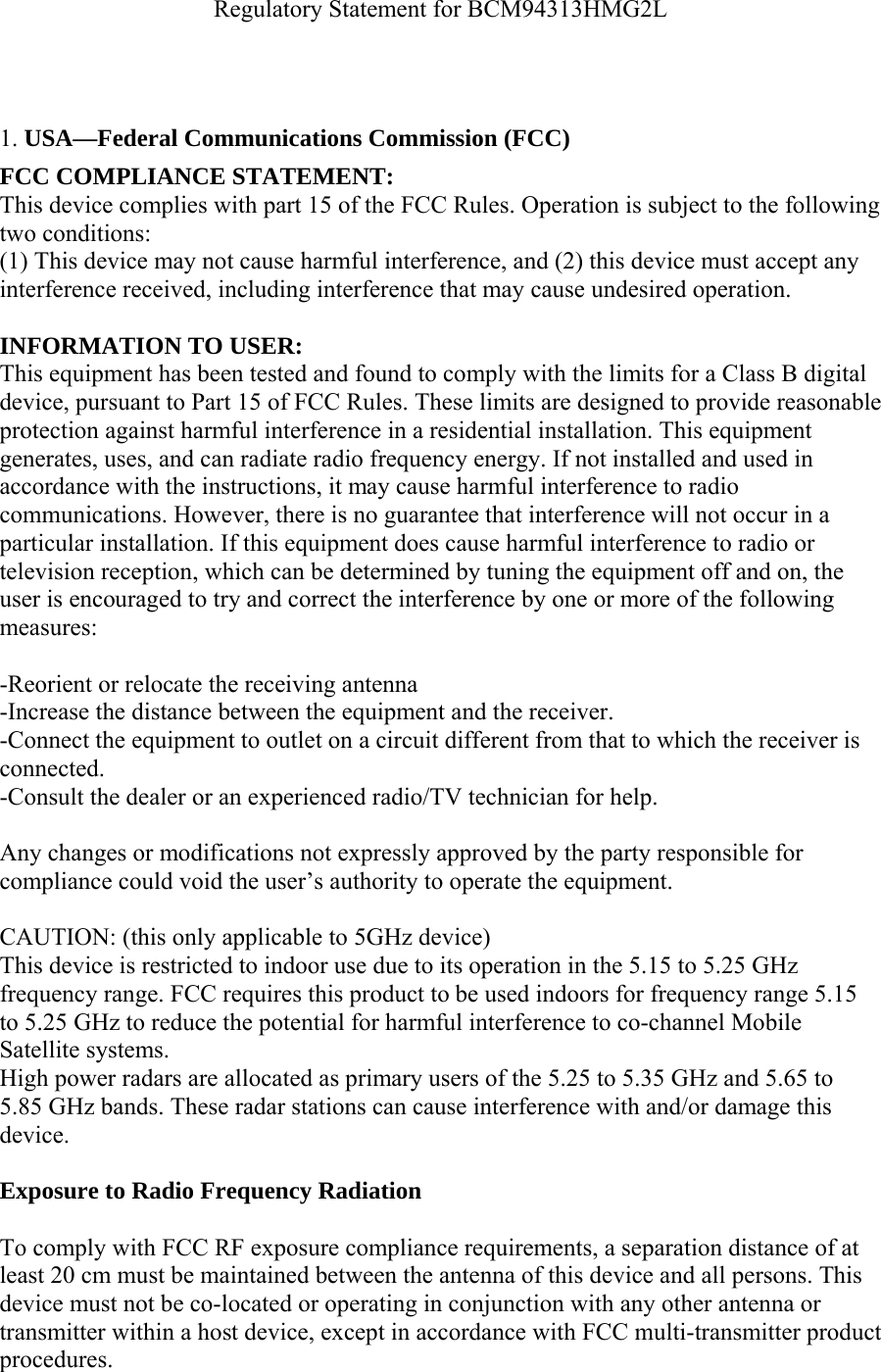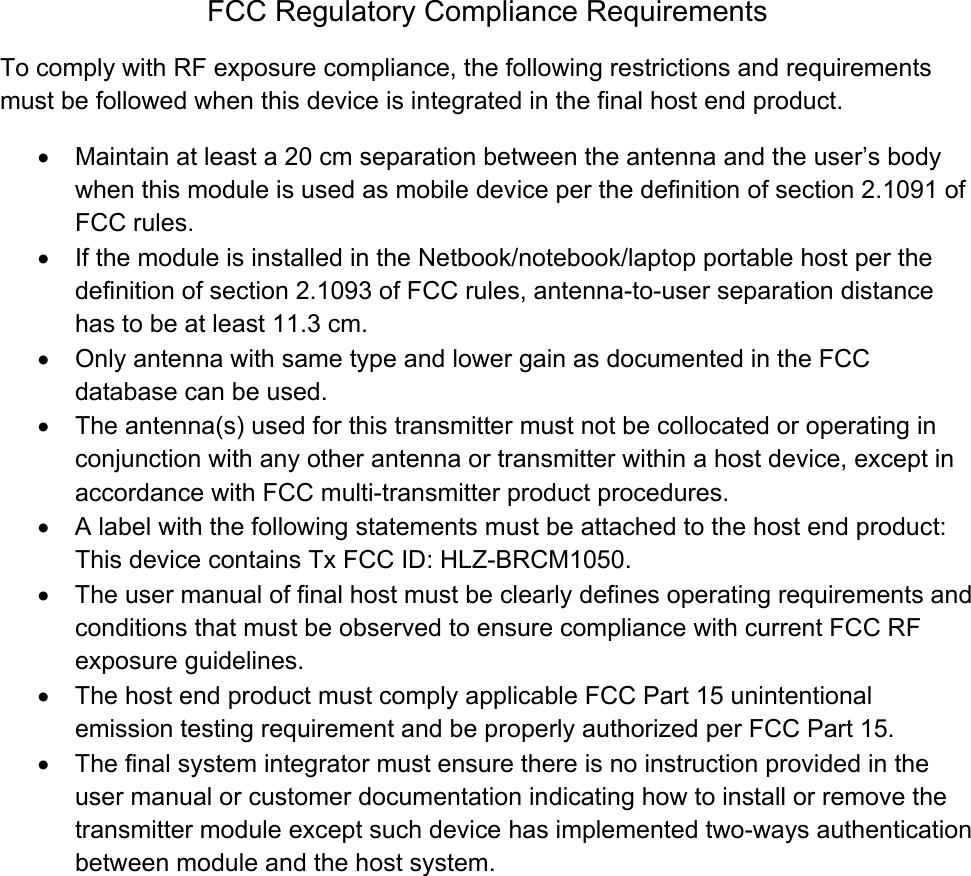Acer orporated BRCM1050 802.11g/Draft 802.11n WLAN PCI-E Minicard User Manual OEM installation guide
Acer Incorporated 802.11g/Draft 802.11n WLAN PCI-E Minicard OEM installation guide
Contents
- 1. OEM installation guide
- 2. Host user manual
- 3. Users Manual 1
- 4. Users Manual 2
- 5. Users Manual 3
- 6. Users Manual 4
OEM installation guide

